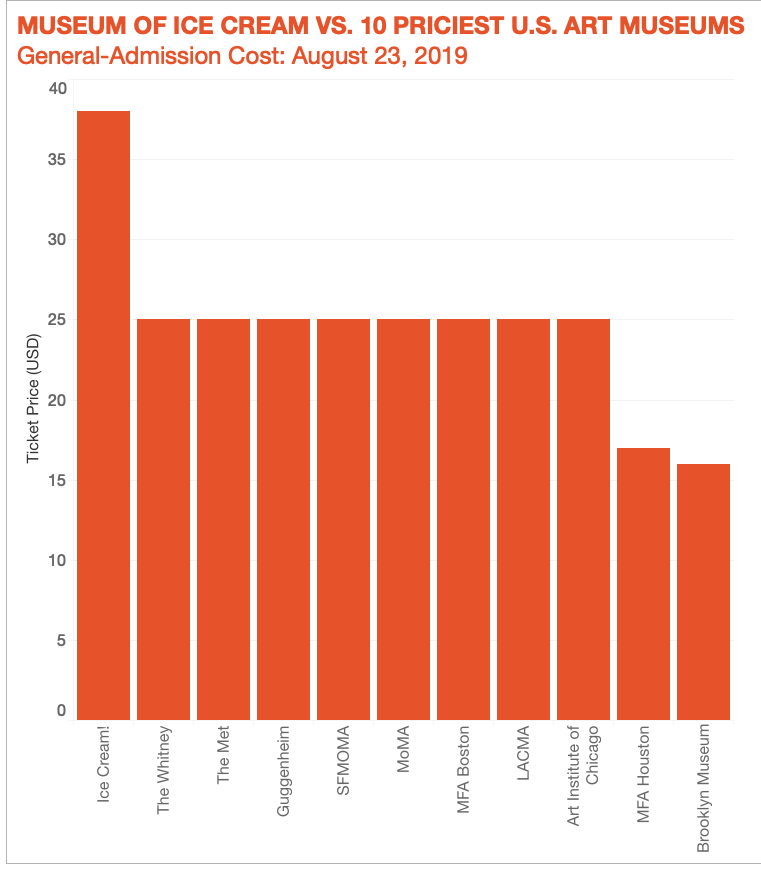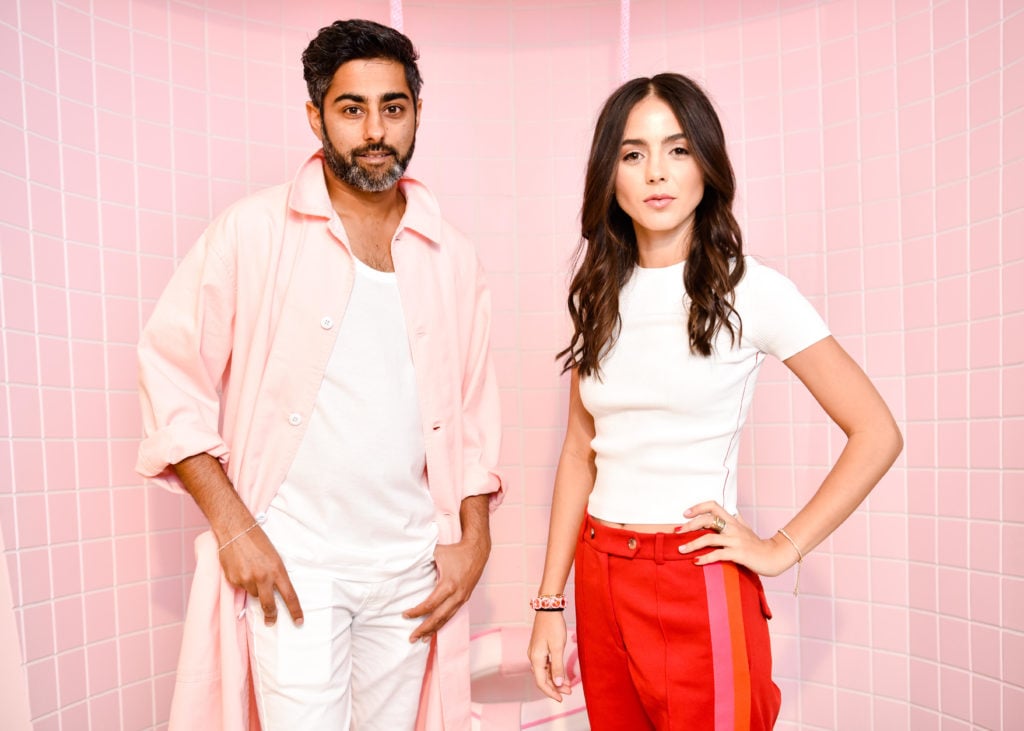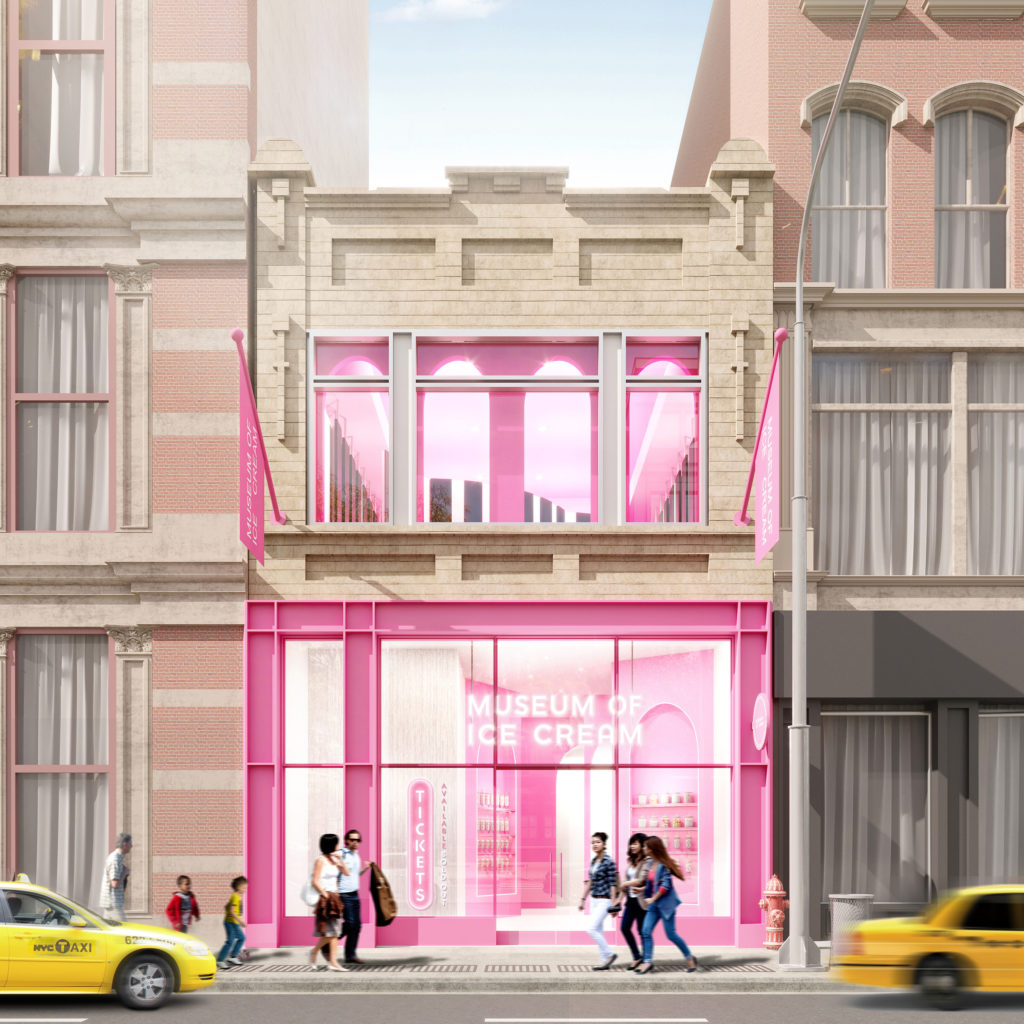Every Monday morning, artnet News brings you The Gray Market. The column decodes important stories from the previous week—and offers unparalleled insight into the inner workings of the art industry in the process.
In this edition, adding toppings to last week’s “democratization” sundae…
I SCREAM, YOU SCREAM, WE ALL SCREAM… FOREVER
On Wednesday, my colleague Sarah Cascone reported that the Museum of Ice Cream (MOIC), the pop-up Instagram trap that spawned a thousand would-be heirs to the selfie throne, will open a permanent location in New York City this fall. The announcement has compelled the art-world chorus to once again decry the MOIC’s bastardization of the term “museum.” And while the candy-colored cathedral to Likes most certainly is not a museum in any traditional sense, the most outrageous aspect of its next chapter is how vividly it clarifies that the MOIC is a superior business to running an actual art institution.
First, though, let me disgust you with some relevant details! The MOIC New York will take up residence in SoHo, in a roughly 25,000-square-foot space recently vacated by fast-fashion retailer H&M. Along with, in Cascone’s words, the “largest version of its signature sprinkle pool to date,” the flagship will offer visitors these brain-liquefying, sweets-themed attractions:
Guests can also look forward to 13 brand new installations inspired by ice cream and other desserts, created by MOIC’s architects and designers. Highlights will include a three-story slide, a floating table of desserts, a hall of giant scoops, an MTA-inspired “Celestial Subway,” and a hidden “Queen Bee hive.”
Honestly, I might rather live under a bridge for the rest of this year than experience what any of that means in person. Nevertheless, it’s all happening, thanks largely to the fact that the Museum of Ice Cream has scooped up more than 1.5 million visitors since opening its first pop-up in 2016.
And it’s still only the beginning. Manish Vora, one of the MOIC’s two cofounders, said in a statement that the forthcoming SoHo space is only “the first of several flagship locations that will launch in the US and abroad over the next 18 months.” And as I mentioned in last week’s Gray Market on the always-dubious “democratization” of contemporary art (via Pace Gallery’s mysterious PaceX initiative), the MOIC’s parent company, Figure8, recently landed $40 million in venture-capital investment that staked the company to a $200 million valuation.
So how is this possible, let alone justified from a business standpoint?
Naturally, a big part of the answer has to do with the tractor-beam pull of hype and the depressingly basic taste of the average person. (Remember when “the wisdom of the crowd” made Gangnam Style the biggest pop song in the world, or convinced Frito-Lay to debut cappuccino-flavored potato chips? These are outcomes made possible, even likely, by turning aesthetic and sensory decisions over to the masses.)
But an equally big part of the MOIC’s success has to do with dollars and cents, especially in comparison to what it takes to run a real museum.

Wheeeee, guests cash in precious seconds of youth they can never regain by frolicking in the Museum of Ice Cream’s Instagram-famous sprinkle pool! Photo by Kelly Sullivan/Getty Images for Museum of Ice Cream.
(SORT OF) GETTING WHAT YOU PAY FOR
Now, I should point out that the MOIC’s cofounders recently trademarked the term “experium,” a mashup of “experience” and “museum,” to describe its branded locations. One might argue this shows Figure8’s intent to quash any illusions that it is an actual scholarly institution. At the same, it is still called the Museum of Ice Cream, and my point in this column isn’t to accuse them of false advertising, so I think we can all agree to move past the semantic nuances, yes?
One crucial variable in the Museum of Ice Cream’s success is its admission price. Entry to the New York flagship will cost visitors an ice-cold $38.
If you think that sounds extreme, you’re right: Cascone notes in her story that $38 is “far more than the city’s premiere cultural destinations like the Metropolitan Museum of Art and the Museum of Modern Art (both $25) or the nearby New Museum (just $12).”
But the situation is actually even starker than that. I ran the numbers, and it turns out that a ticket to New York’s permanent Museum of Ice Cream will cost more than a general-admission ticket to any major art museum in America.
OK, let’s take a breath here. Yes, I wrote exactly what you thought I wrote: The new Museum of Ice Cream will cost more than a general-admission ticket to any major art museum in America.
Here is a chart to more tightly focus the nightmare we are now living through.

Read ’em and weep: ticket prices for the Museum of Ice Cream vs the 10 most expensive major US art museums. © Tim Schneider 2019.
In fairness, the original Museum of Ice Cream pop-up “only” charged $16, so not every one of the 1.5 million-plus attendees to date has shelled out what the NYC flagship will ask. Still, $16 is the price of general admission to the Brooklyn Museum today, and the MOIC has been charging $38 for access to its permanent outpost in San Francisco since September of last year, with demand apparently staying healthy enough to warrant no change in pricing strategy.
Yet the MOIC doesn’t just have more money coming in per ticket than major art museums. It is also paying out much, much less to keep operating.
THE COST OF DOING BUSINESS
Museums often get accused of debasing the high-flown values of art in service of pursuing the almighty dollar. Shades of that criticism certainly stick in some cases—remember MoMA’s Björk retrospective?—but it’s usually exaggerated rhetoric.
However, we have an answer for what it would look like if all those accusations were 100 percent true… and that answer is the Museum of Ice Cream.
Unlike legitimate artwork and artifacts, the “attractions” inside the MOIC are worthless. On a surface level, this means you don’t need to pay to insure them against loss, damage, or destruction, and you certainly don’t need to maintain a conservation department to care for them. It’s not as if the MOIC has to pull a Rijksmuseum and invest millions of dollars in Operation Night Watch if some kid barfs in the sprinkle pool. Just replace the sprinkles for a few bucks!
Similarly, since what’s on view has no history or aesthetic depth, the MOIC has no reason to pay a curatorial staff to study and properly contextualize anything for the public, either. The “hall of giant scoops” is not a hall of kings whose past deeds will enrich visitors’ appreciation of art and history. No greater dialogue is going to emerge from explaining why the table of floating desserts has been juxtaposed with the “Celestial Subway.” It’s. All. Just. Nonsense. For. The. ‘Gram.
Also unlike legit art institutions, the Museum of Ice Cream is not at risk of marginalizing important voices and, therefore, providing a biased or incomplete history of its field. Which means it has no continuous responsibility to evolve its collection by buying more (expensive) objects, let alone to pay the high cost of storing what’s not currently on view in climate-controlled, archival conditions.

Museum of Ice Cream cofounders Manish Vora and Maryellis Bunn are millionaires many times over based on the MOIC’s runaway success. Let that sink in. Photo courtesy of the Museum of Ice Cream.
Oh, and is there any incentive for the MOIC to curate a rotating program of exhibitions? Hell no! As long as the attractions continue bringing in guests, you just leave them alone, the same way Cawker City, Kansas never has to swap out the World’s Largest Ball of Twine for some other tourist-baiting roadside attraction. As a result, the MOIC saves tens of thousands of dollars that museums regularly pay for exhibition design, build-out, art shipping, installation, de-installation, packing, crating, return shipping, demolition, and gallery repair. (And forget the cost of studio visits or research trips, too.)
Finally, while the MOIC is saturated with merchandising opportunities, the cost of creating its merch is dramatically lower than for art museums. Why? Because the MOIC never has to pay artists, estates, or foundations to license the works being reproduced for its gift shop. And books, a particularly labor- and cost-intensive part of museums’ retail playbook, are completely irrelevant, since no one wants either a scholarly essay on a three-story slide or any images of the MOIC’s attractions that they themselves are not in.
Instead, the MOIC gets to focus on products like its own brand of ice cream (sold at Target and soon, Albertsons), its own clothing line (also sold at Target), and, for reasons that may only be decipherable from some vantage point on the astral plane, its own makeup collection (with Sephora)… all of which, we can safely assume, its corporate partners pay the museum to stock in exchange for a cut of sales.
Mix it all up, and the MOIC charges significantly higher ticket prices than real art museums, with equal or better merchandising options, while having to pay out significantly lower, and fewer, expenses to keep visitors coming in.
That, ladies and gentlemen, is a recipe for good business. But it is also enough reason for anyone who cares about the public’s exposure to great art, not empty experiential calories, to stress-eat their way into the nearest emergency room.
[artnet News]
That’s all for this week. ‘Til next time, remember: value and values are two very different things.










